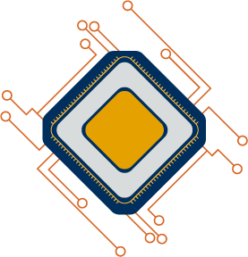The VICOM-decision is a highly relevant decision, since an image – in the form of a two-dimensional data array – has been considered as a physical entity and therefore as a technical feature. In G1/19 such kind of data is called “functional data”.
Subject matter of claim 1 in suit:
A method of digitally processing images in the form of a two-dimensional data array having elements arranged in rows and columns
inwhich an operator matrix of a size substantially smaller than the size of the data array is convolved with the data array,
including sequentially scanning the elements of the data array with the operator matrix,
characterised in that
the method includes repeated cycles of sequentially scanning the entire data array with a small generating kernel operator matrix to generate a convolved array and then replacing the data array as a new data array; the small generating kernel remaining the same for any single scan of the entire data array and although comprising at least a multiplicity of elements, nevertheless being of a size substantially smaller than is required of a conventional operator matrix in which the operator matrix is convolved with the data array only once, and the cycle being repeated for each previous new data array by selecting the small generating kernel operator matrices and the number of cycles according to conventional error minimisation techniques until the last new data array generated is substantially the required convolution of the original data array with the conventional operator matrix.
Reasons for the decision
Reasons 4: The now effective method Claims 1-7 and 12 are directed to methods for digitally processing images. One basic issue to be decided in the present appeal is, therefore, whether or not such a method is excluded from patentability under Article 52 (2) and (3) EPC on the ground that it is a mathematical method as such.
Reasons 5: There can be little doubt that any processing operation on an electric signal can be described in mathematical terms. The characteristic of a filter, for example, can be expressed in terms of a mathematical formula. A basic difference between a mathematical method and a technical process can be seen, however, in the fact that a mathematical method or a mathematical algorithm is carried out on numbers (whatever these numbers may represent) and provides a result also in numerical form, the mathematical method or algorithm being only an abstract concept prescribing how to operate on the numbers. No direct technical result is produced by the method as such. In contrast thereto, if a mathematical method is used in a technical process, that process is carried out on a physical entity (which may be a material object but equally an image stored as an electric signal) by some technical means implementing the method and provides as its result a certain change in that entity. The technical means might include a computer comprising suitable hardware or an appropriately programmed general purpose computer.
Reasons 6: The Board, therefore, is of the opinion that even if the idea underlying an invention may be considered to reside in a mathematical method a claim directed to a technical process in which the method is used does not seek protection for the mathematical method as such.
Reasons 7: In contrast, a “method for digitally filtering data” remains an abstract notion not distinguished from a mathematical method so long as it is not specified what physical entity is represented by the data and forms the subject of a technical process i. e. a process which is susceptible of industrial application.
